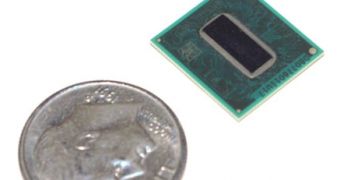This Year's Consumer Electronics Show is not only WiMax, wireless technologies and brand-new laptops. Earlier this week, Intel released no less than sixteen (16) Penryn-based processors in a single shot, with others yet to come. The show must go on, says the chip manufacturer, who has readied some aces up its sleeve.
The mobile technology is, undoubtedly, more powerful than it used to be, say three years ago, yet it cannot keep up with the software applications as well as with the users' demands. The smartphones (including the iPhone) are just an example of devices running an integrated System-on-a-Chip (SoC) to manage the battery life at any performance costs.
The Ultra-Mobile PCs were supposed to bring a power boost in a portable form, so users to be able to carry them all over. There was also the need of an optimized operating system to keep up with the system. It was time for a change.
Intel has just unveiled its Menlow platform, dedicated to ultra-mobile computers as well as to mobile Internet devices. The new platform is comprised of the Silverthorne CPU (based on the Bonnenn CPU core) and the Poulsbo chipset. Silverthorne's architecture is a simplified version of the Core 2 CPU.
It only comes as an x86 version (so users can run the PC-based applications out-of-the-box) and is compatible with the Merom's (Core 2 Duo, 65-nanometer processors) ISA standards. Although it can "understand" the SSE3 instruction set, it totally lacks support for the SSE4.
Intel promised that they would release the Silverthorne with clock speeds similar to those of the Pentium M back in 2004, which means that it was expected to run at frequencies from 1.0 GHz up to 2.0 GHz. The CES demonstration, however, presented a Silverthorne CPU running at much lower speeds, from 600 MHz to 1.6 GHz.
It is for sure that the Silverthorne processors are built with Intel's latest 45-nanometer technology. However, the Poulsbo chipset is not, and Intel won't disclose the manufacturing process, but it is alleged to be based on the older, 65-nanometer process.

 14 DAY TRIAL //
14 DAY TRIAL //